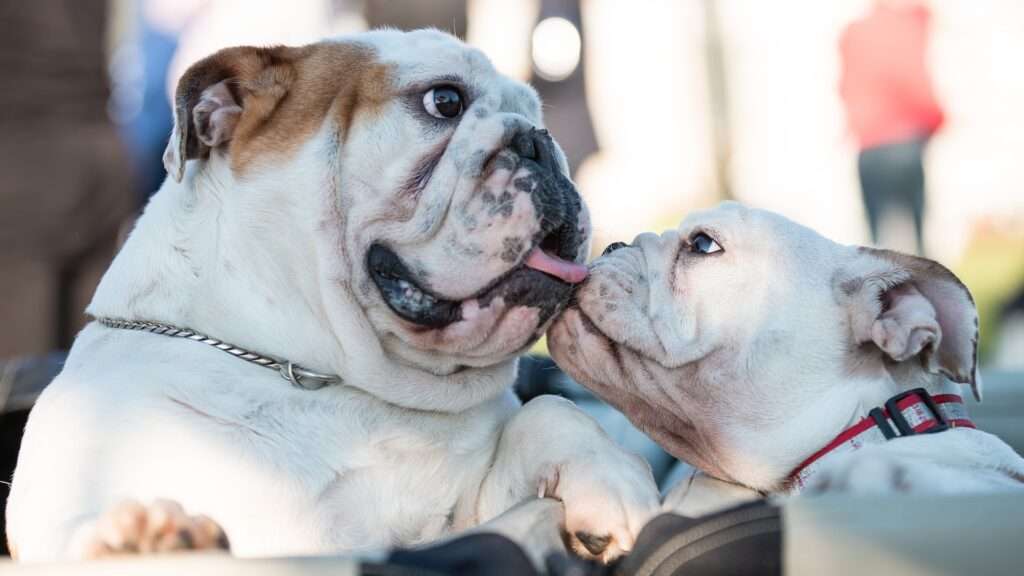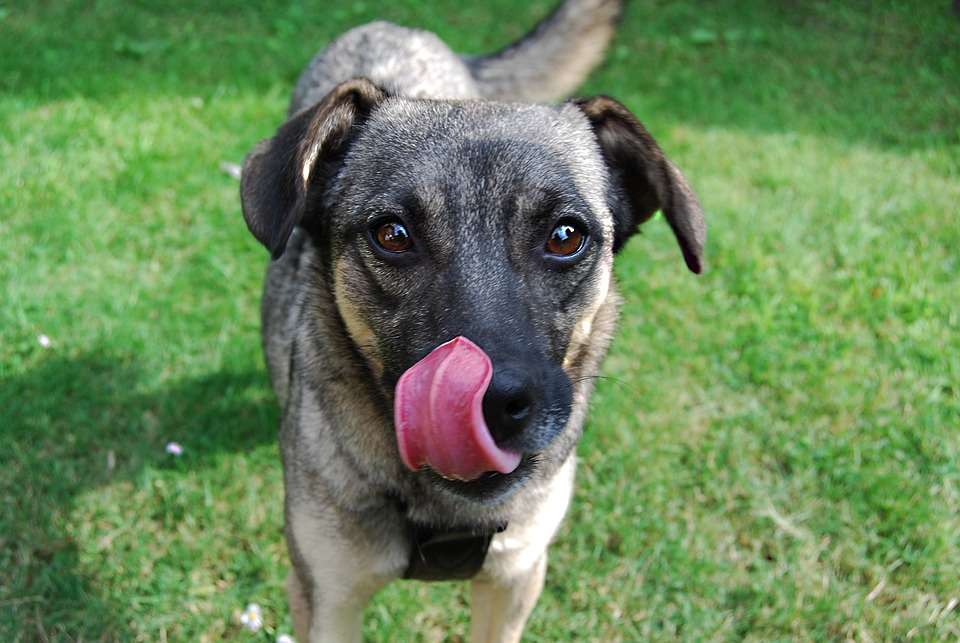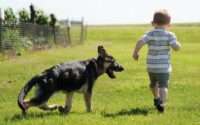Why Do Dogs Lick Each Other? The Surprising Reasons Explained
Dogs, those lovable and sociable creatures, have their own unique language of communication, and one of their most intriguing methods is through licking. Have you ever wondered why dogs engage in this behavior when interacting with their furry counterparts?
Unraveling the mystery behind why do dogs lick each other not only deepens our understanding of their behavior but also empowers us to ensure their social well-being and contentment. Prepare to dive into the fascinating world of doggie licks and discover the secrets they hold!
Social Interaction

In the enchanting realm of canines, social interaction is a cornerstone of their existence. Dogs possess a remarkable language all their own, and one intriguing aspect of their communication repertoire is none other than licking. If you’ve ever marveled at dogs engaged in this behavior, you might be curious about its deeper significance. Gear up for an exciting exploration into the intricate world of doggie licks, where bonds are formed and messages are shared.
Greeting Rituals: Sniffing, Wagging, and Licking
Picture a joyful encounter between two furry friends. As they come face to face, their noses instinctively intertwine, gathering a wealth of olfactory information. Sniffing serves as an introductory handshake, confirming each other’s identity and gauging their overall disposition.
But the greeting ritual doesn’t stop there. A gentle swipe of the tongue across the face, the infamous doggie kiss, adds a touch of intimacy to the interaction. Through licking, dogs communicate that they mean no harm, conveying a message of friendliness and acceptance. It’s their way of saying, “Hello, I come in peace.”
Affectionate Licks: Bonds Strengthened
Beyond the initial greeting, dogs often engage in licking to express affection and reinforce the social bonds they share. This heartwarming display of tenderness is especially prominent among dogs with close ties, such as littermates or long-term companions.
You may observe dogs gently and lovingly licking one another’s faces, paws, or even their ears. These affectionate licks speak volumes, affirming the deep connection and emotional attachment they share. It’s their equivalent of a heartfelt embrace, a canine “I love you.”
Hierarchy and Dominance: Licks of Authority
In the intricate dynamics of a dog pack, the notion of hierarchy is ever-present. Licking can also serve as a means of establishing and reinforcing social order among dogs. In this context, licking takes on a different tone, signaling dominance rather than affection.
A more dominant dog may assert their authority by offering forceful, targeted licks to their subordinates. These licks, accompanied by authoritative postures, growls, or snarls, convey a clear message: “I am in charge here.” It’s a form of communication that ensures everyone understands their place within the social structure.
It’s important to note that the intent behind licking can vary depending on the context and the individuals involved. While licking predominantly serves as a benign and friendly gesture, excessive or persistent licking may indicate underlying issues, such as anxiety or compulsive behavior, which require attention and professional guidance.
Intriguing, isn’t it? The world of doggie licks unveils a myriad of emotions and social cues. By understanding the motivations behind their licking behavior, we can forge stronger bonds with our four-legged companions and create environments where they can thrive socially.
Communication
Beyond its role in social interaction, licking holds a fascinating realm of communication between dogs. With their highly developed sense of smell and taste, dogs utilize licking as a means to convey information through these sensory channels. It serves as a subtle language, carrying nuanced messages within the canine community.
The Taste of Identity: Scent, Age, and Health
Dogs possess an extraordinary olfactory system that allows them to discern intricate details from scents. When one dog licks another, it’s not merely a gesture of affection but a way of tasting their unique scent. Through this sensory exploration, dogs can gather essential information about their counterpart.
The chemical compounds present on the other dog’s skin can reveal their age, sex, reproductive status, and even their overall health. It’s as if they are delicately sampling the olfactory signature, gaining insights into the inner world of their furry friend.
Emotional Expressions: Licks that Speak Volumes
Licking can also be a powerful medium for dogs to convey their emotional state to others. Just as humans might bite their nails or fidget when anxious, dogs may resort to excessive self-licking when experiencing stress or unease. This repetitive behavior can be a self-soothing mechanism, an attempt to calm themselves in the face of anxiety.
Moreover, dogs may extend their licks beyond themselves, reaching out to lick their fellow canines. In doing so, they communicate their emotional needs, seeking solace, comfort, or reassurance from their peers. It’s as if they are saying, “I need your support, your presence matters.”
Unraveling the Evolutionary Origins: Dogs vs. Wolves
Interestingly, licking is a behavior more prevalent in dogs than in their ancestral counterparts, wolves. This stark contrast implies that licking has evolved specifically in dogs as a mechanism for communication and bonding within their social groups. Dogs, as highly social animals intricately woven into human society, have refined this behavior to enhance their ability to convey information and strengthen social ties.
As we delve deeper into the enigmatic language of licking, we begin to grasp the intricate layers of communication that dogs utilize. From taste-induced identification to emotional expression, licking acts as a silent dialogue among these remarkable creatures.
So, the next time your furry companion extends their tongue in a gentle lick, take a moment to appreciate the intricate messages embedded within this seemingly simple act. It’s a testament to the rich and complex communication system that flourishes within the canine world.
Developmental Reasons
Licking in dogs encompasses not only social and communicative aspects but also plays a pivotal role in their early development. From the tender moments between mother and pups to the playful interactions of young companions, licking weaves an intricate tapestry of growth and learning.
Maternal Love: Nurturing Licks
In the earliest stages of a puppy’s life, the mother dog employs licking as a vital tool for their survival. Through gentle licks, she stimulates their newborns, encouraging their breathing and aiding their digestion.
This nurturing behavior extends beyond mere physiological support; it forms a profound emotional bond between mother and pups. As the mother dog licks her offspring, an unbreakable connection is forged, fostering a sense of security and belonging.
Socializing through Licks: Puppies at Play
As puppies grow, they embark on a delightful journey of discovery, eagerly exploring the world around them. During playful interactions, licking takes on a new dimension – a pivotal role in their socialization process.
Puppies engage in reciprocal licks, not only as a source of joy but also as a means to learn vital social cues and develop appropriate behaviors. Through this delightful licking ritual, puppies acquire a shared language, understanding boundaries, and establishing the foundation of canine etiquette.
Licking serves as a form of communication among puppies, conveying their intentions, and fostering cooperation. It’s their way of saying, “I’m ready to play,” “Let’s be friends,” or “I’m sorry if I was too rough.” Through this tactile exchange, they navigate the intricate dance of social dynamics, learning invaluable lessons about empathy, respect, and companionship.
The World Unveiled: Exploring with Licks
Licking goes beyond social interactions for puppies; it is a gateway to understanding the world around them. Much like human infants explore objects through touch, puppies use their inquisitive tongues to investigate their surroundings. Every lick reveals new textures, tastes, and scents, expanding their sensory horizons and contributing to their cognitive development.
Understanding the developmental significance of licking enables us to appreciate the profound impact it has on puppies’ growth. By observing and nurturing these natural behaviors, we can provide them with enriching socialization experiences, ensuring they develop into well-adjusted and confident adult dogs.
As you witness the endearing licks between mother and pups, or the exuberant playfulness of young companions, remember the underlying developmental milestones being reached. Through these simple gestures, a remarkable symphony of growth and discovery unfolds, guiding them on their path to canine adulthood.
Sensory Stimulation
Licking in dogs is not only a social and communicative behavior but also a gateway to a world of sensory stimulation. With a remarkable number of taste buds on their tongues, dogs are equipped to savor a vast array of flavors and textures. Through licking, they embark on a sensory journey, engaging both their taste buds and their emotional well-being.
Flavors and Textures: A Gustatory Adventure
Imagine the delightful sensations dogs experience as their tongues make contact with different surfaces. When dogs lick each other, they aren’t solely engaging in bonding and communication; they’re also indulging in a sensory symphony of tastes and textures.
The intricate flavors they encounter on their furry companion’s skin offer a tantalizing palette of sensations. From the salty tang of sweat to the subtle sweetness of natural oils, each lick unveils a new aspect of their canine counterpart’s essence. It’s a culinary exploration, enriching their sensory world and adding layers of complexity to their interactions.
Self-Soothing Serenade: A Moment of Calm
Licking also serves as a form of self-soothing behavior for dogs, offering them a momentary respite from stress or anxiety. Whether they lick themselves or another dog, this act triggers the release of endorphins, those natural “feel-good” chemicals in the brain. As these endorphins surge, a wave of relaxation washes over them, providing a much-needed sense of calm in tumultuous moments.
For dogs, licking can be an instinctive coping mechanism, a way to self-soothe when faced with challenging situations. It’s their personal retreat, a brief escape from the noise and chaos of the world. Through this self-directed behavior, dogs can find solace, seeking comfort in the gentle rhythm of their own licks.
By acknowledging the sensory significance of licking, we gain a deeper understanding of the multifaceted nature of this behavior. It’s not just about communication or emotional expression; it’s a delightful exploration of flavors and textures, intertwined with moments of tranquility and relief.
So, the next time you observe your furry companion engaged in a vigorous lick, appreciate the sensory adventure they are embarking upon – a symphony of tastes, a moment of serenity amidst the whirlwind of life.
Potential Problems

While licking is a natural and instinctive behavior for dogs, it can sometimes veer into problematic territory if it becomes excessive, aggressive, or signals underlying health issues. Understanding the potential problems associated with licking allows us to recognize when intervention may be necessary for the well-being of our beloved canine companions.
Excessive Licking: A Cause for Concern
When dogs excessively lick themselves or other dogs, it can lead to a range of issues. Constant licking can result in skin irritation, hot spots, and the development of sores. In severe cases, it may even lead to hair loss or infection.
Excessive licking can become a compulsive behavior, often triggered by stress, anxiety, or boredom. If you observe your dog engaging in persistent, repetitive licking, it is crucial to seek veterinary advice to identify and address any underlying causes.
Unmasking Underlying Health Issues
Obsessive licking can serve as a telltale sign of an underlying health problem. Allergies, such as food or environmental allergies, can provoke intense itching and discomfort, driving dogs to excessively lick themselves as a way to alleviate the irritation.
Additionally, dogs may resort to compulsive licking due to anxiety disorders or other behavioral issues. Consulting with a veterinarian will help determine if there are any medical or behavioral factors contributing to the excessive licking, enabling appropriate treatment and management strategies.
Aggressive Licking: A Sign of Dominance or Territory
While licking is typically a friendly and amicable behavior, there are instances when it takes on a more assertive and aggressive nature. Some dogs may engage in forceful and less friendly licking as a means of asserting dominance or establishing territory.
Accompanied by growling, snarling, or other dominant behaviors, aggressive licking can create tense social dynamics and potential conflicts between dogs. Professional guidance from a certified dog behaviorist or trainer can help address and manage these dominant behaviors effectively, ensuring a harmonious and safe environment for all.
Conclusion
In conclusion, licking is a natural behavior for dogs, and it serves a variety of purposes in social situations. Dogs may lick each other as a way of greeting, showing affection, establishing hierarchy, and communicating important information. Licking can also serve important developmental and sensory purposes for dogs.
Licking is usually considered as normal behavior for dogs, therefore it is important to monitor your dog’s licking behavior to ensure that it does not become excessive or aggressive. If you have any concerns about your dog’s licking behavior, consult with a veterinarian or professional dog trainer for advice.
Understanding why dogs lick each other can help you better understand your own dog’s behavior and ensure that they are healthy, happy, and comfortable in social situations. So the next time you see your dog licking another dog, you can rest assured that they are simply engaging in natural and important social behavior.
Frequently Asked Questions
Q: Why do dogs lick each other’s faces?
A: Licking each other’s faces is a common form of greeting and establishing friendly intent among dogs. It’s their way of saying “hello” and engaging in social interaction.
Q: Why does my dog excessively lick themselves?
A: Excessive self-licking can be a sign of underlying health issues, such as allergies, skin irritations, or anxiety. It’s essential to consult with a veterinarian to determine the cause and appropriate treatment for your dog’s excessive licking.
Q: Is excessive licking always a problem?
A: While occasional licking is normal, excessive licking that leads to skin irritation, sores, or compulsive behavior can indicate a problem. It’s best to seek veterinary advice to address any underlying issues and provide necessary interventions.
Q: Can licking be a sign of stress or anxiety in dogs?
A: Yes, dogs may resort to licking themselves or other dogs as a self-soothing mechanism when feeling stressed or anxious. If you notice excessive licking combined with other signs of anxiety, consult with a veterinarian or a professional dog behaviorist for guidance.
Q: How can I discourage aggressive licking behavior?
A: Aggressive licking, accompanied by growling or snarling, may indicate dominance or territorial behavior. Working with a certified dog behaviorist or trainer can help address and manage these aggressive behaviors effectively through behavior modification techniques.
Q: Are there any health risks associated with excessive licking?
A: Excessive licking can lead to skin irritations, sores, hair loss, or infection. If your dog excessively licks themselves, it’s important to monitor their skin condition and seek veterinary attention if there are signs of discomfort or persistent issues.
Q: Can puppies learn through licking each other?
A: Yes, licking plays a crucial role in the socialization process for puppies. Through licking, they learn important social cues, develop appropriate behaviors, and establish bonds with their littermates and other dogs.
Q: Is it normal for dogs to lick objects or surfaces?
A: Dogs may lick objects or surfaces as part of their exploration and sensory investigation. However, if this behavior becomes excessive or interferes with their daily activities, it’s recommended to consult with a veterinarian or behavior professional to ensure it’s not a compulsive behavior or a sign of underlying health concerns.
Remember, every dog is unique, and if you have concerns or questions about your dog’s licking behavior, it’s always best to consult with a qualified professional for personalized guidance and support.




